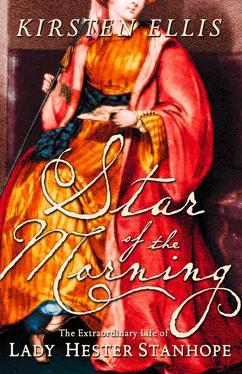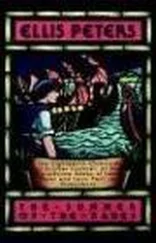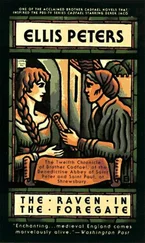Chatham died on 11 May 1778 in his seventieth year and was buried in Westminster Abbey on 9 June. ‘The concourse of people assembled’, it was reported the next day, ‘was beyond belief; the windows of all the houses, and even the tops of some were crowded; as were the streets, though the spectators had been not only exposed to the rain for several hours, but to stand in dirt and wet nearly to the ankles.’ The previous day, around a hundred thousand people had filed past his body in the black-draped Painted Chamber of Westminster Palace. The Commons had agreed to pay off Chatham’s debts, which amounted to some £20,000, the equivalent to some £2 million today.
Hester grew into a sturdy child with dark hair and long limbs; she was an early and voluble talker, who struck her family as having definite opinions. When she was two and a half, her mother gave birth to her sister, Griselda. To the Mahons’ anguish, an earlier pregnancy had resulted in the birth of a son who died shortly afterwards. After being invited to inspect Griselda, William Pitt wrote to his mother, clearly showing his preference. ‘I am told my little niece is a perfect beauty, though I own I am hardly persuaded of it, and have extremely offended the nurse by not preferring her to Hester.’ 8
No matter what sweetness little Griselda exhibited, her grandmother could not help showing favouritism. Writing to her friend Lady Chatham, betraying a grim pride at their wilful granddaughter, Grizel wrote: ‘Hester is quite wild. I am forced to send assistance from here to keep her within bounds’. 9 In an earlier letter, Lady Chatham too had noted with delight that ‘My namesake is so merry, she not only laughs all day, but also all night, to the no small disturbance of those who during the latter would choose to sleep’. 10 The following year, while her daughter-in-law, pregnant for a third time, was in London, Grizel wrote: ‘I am grown quite a fool about Hester. What a wonderful and amiable child … I have hopes her sister will be such another. Hester said – the next must be a boy, for two girls are enough for anybody. If like her, a dozen would be welcome to me, so I am quite calm and feel no impatience on that score.’
In February 1780, a month before Hester’s fourth birthday, Lady Mahon gave birth in London to a third daughter, Lucy, a frail and pretty newborn, but her recovery was complicated by the onset of puerperal fever. At twenty-five, Lady Mahon was exhausted by her succession of pregnancies. She seemed at first to improve, and rallied slightly in spring. Her sister Harriot wrote from Harley Street that she is looking after the ‘Invalid’ in April, telling her mother hopefully that ‘she gains strength visibly every day’. 11 By May she reported that her sister ‘bore a drive in the hottest day imaginable without suffering from it in the least’, and how they went shopping for lute strings and chintzes. 12 The ‘Invalid’ was apparently well enough to attend a ball at Gloucestershire House, and Charles was so convinced of her good progress that he went on a tour of Buckinghamshire, where he planned to run for Parliament.
Before the summer was out, however, Lady Mahon’s condition suddenly worsened, possibly due to a weakened heart. She died at Chevening on 18 July 1780 and was buried in the family chapel. Three weeks later Grizel wrote to her friend Lady Chatham, deep in mourning for her daughter’s death. ‘Poor Charles has passed a melancholy day. I keep him amused as much as I can, and nothing but hindering him to think is service. Alas! when he does – but I will not dwell upon a subject that must be heartbreaking to us all. The sweet children are perfectly well and thrive amazingly in the good air. I see poor Charles grow thoughtful when they are present, though he takes great notice of them when they are present, more I think, than he used to. Time alone can do good to us all.’ In reality, she despaired. Her eldest grandchild asked her constant, confused questions about death to which she had no answer, while her son retreated into silence, barely eating, his skin suddenly ashen, his eyes red-rimmed. When Charles returned to London to throw himself into politics, the girls stayed behind at Chevening.
Within months of becoming a widower, Charles’s eye fell on Louisa Grenville, his late wife’s cousin. It was another politically advantageous marriage: Louisa’s father Henry Grenville had already served as Governor of Barbados and ambassador at Constantinople. Writing from Bath, Charles’s former sister-in-law, Harriot, described a day she spent with his bride-to-be over the summer of 1780: ‘Poor Louisa is a little of a Coward, and has not rode often enough to be a very good Horsewoman, but her Figure is remarkably pretty in a riding dress, and she looks vastly well upon her Horse.’ Louisa, apparently susceptible to Charles’s forceful personality, believed he was marked for a brilliant future.
Charles could see Louisa lacked the intellect and the wit of his first wife, but he craved the reassurance and the routine of marriage. At twenty-three, with her ash-blonde hair and blue eyes, Louisa was in all ways a contrast to the former Lady Mahon. Her background of privilege and carefully managed wealth was a different cut from the brilliant, volatile and impulsively spendthrift Pitts. Within months of being widowed, Charles remarried; within the year, the new Lady Mahon gave birth to their first son, Philip Henry, the future heir.
For both Charles and his former brother-in-law William Pitt, this was a time of rapid political advancement. Charles was elected for Chipping Wycombe (later known as High Wycombe) in Buckinghamshire, not as a radical, as he had first wished. Instead, his candidature had been endorsed by the Earl of Shelburne, most prominent among a small group of Whig parliamentarians still loyal to the ideals of Chatham. Like William Pitt, Charles passionately favoured the American rebels and parliamentary reform. Shortly afterwards, Pitt followed Charles into the House of Commons as an MP, aged just twenty-one. The two young men shared a common purpose, each determined that his voice would soon provide a rationale for a vision of a better England. At the time, it was greatly in vogue, especially among the Whigs, to appear to flirt with reform, but both Charles Stanhope and Pitt went further than most. It soon became obvious that of the two, it was Pitt who was born for a career in politics. Not only was he the more effective speaker and a naturally charismatic politician, he was unshakeably ambitious and ultimately a pragmatist. He always knew when to draw back. Charles, on the other hand, refused to climb down on any issue once he had taken a stand; he would prove both mercurial and unpopular.
Pitt’s ascent was spectacular. By the age of twenty-three, he found himself in the new Cabinet as Chancellor of the Exchequer. Shelburne, who preferred to stay in his comfortable house on Berkeley Square, offered Pitt the Downing Street house that had been given by King George II in the 1730s as official residence for the First Lord of the Treasury. (It was one of a row of townhouses; when Pitt moved in, it had only recently been renamed as No. 10.) Around this time Pitt wrote to Charles saying he hoped to visit him at Chevening. ‘I trust you will be in town in a very few days, for there are several things in which I am quite at a loss without you.’ 13 Whatever Pitt might have wanted to discuss, he evidently relied on Charles’s judgement.
On 19 December 1783, the twenty-four-year-old Pitt kissed the King’s hand as First Lord of the Treasury and Chancellor of the Exchequer, the youngest Prime Minister in history. Hester, who was then seven, was well aware of the significance of this achievement and the importance of her uncle’s position. Pitt moved back to Downing Street, and saw a good deal of the Mahons, who often stayed with him. It was from the Prime Minister’s residence, at half past three in the morning on 3 June 1785, that a thrilled Charles wrote to his friend Joseph Banks, informing him that Louisa had just given birth to another boy, and that he would be ‘extremely flattered’ if he would be the child’s godfather. 14 This was Hester’s second half-brother, Charles. 15
Читать дальше












